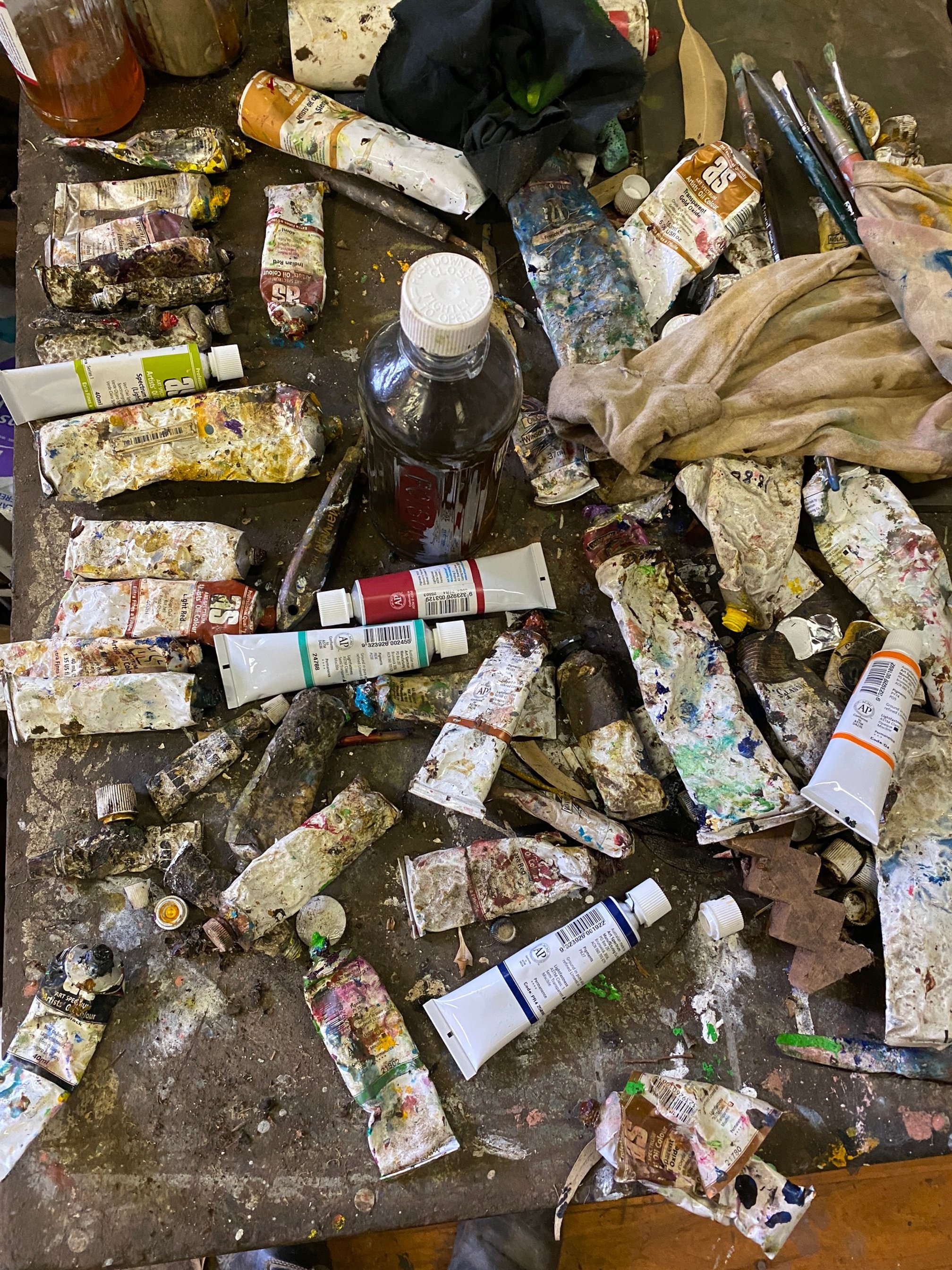You’d think a painting
Would be that place where the paint landed, was spread, brushed, but that is not necessarily the case.
That place may lie elsewhere.
You might think that a painting is where colours and shapes could be organised according to intent or intuition or accident.
Maybe not.
What if the painting took place elsewhere, where the paint was still separated from other colours, still held inside its tubes in which the manufacturers had pumped it?
What if the tubes of paint lay side by side on the painter’s table, each tube waiting to be identified as ‘the one’, waiting for its lid to be unscrewed?
What if all the lids had been taken off? All the tubes are lying side by side each waiting to be chosen as ‘the one’? The paint is still moist, wet, ready to be squeezed, expressed. They are all waiting with baited breath.
What if in waiting, with the artist not having made their choice, the opened tubes allow the paint inside to harden with less capacity to be squeezed to the artist’s intent? In that case when the hole size is reduced by the paint’s hardening, the paint then requires the artist’s muscle to be employed to persuade the paint out and when muscle is required then all sorts of unnecessary efforts are made which then serves to blunt the artist’s intent?
Where does the painting take place? Perhaps there is no painting as a noun, only painting as a verb and there is never any end to it, only perpetually painting without end.
The queue
